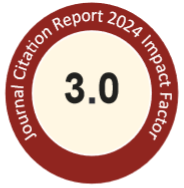Abstract
Carrot slices were blanched, immersed in fructose solution prior to frozen and vacuum fried to prepare carrot chips. The effects of immersing sugar concentration, vacuum frying temperature and time on the quality of fried carrot chips were studied with the central composite rotatable design (CCRD). Results showed that the moisture content, oil content, color quality, and breaking force of fried carrot chips were significantly related to immersing fructose concentration, frying temperature and time. The moisture content and breaking force of fried carrot chips were positively correlated with immersing fructose concentration, whereas the oil content and color quality of fried carrot chips were negatively correlated with immersing fructose concentration. Based on CCRD and contour plots, optimal processing conditions of vacuum fried carrot chips were: vacuum frying temperature of 100-105°C, vacuum frying time of 16-20 min, and immersing fructose concentration of 30-40%. The high R 2 correlation coefficients (above 0.90 except moisture content and ΔE value) indicated that the variables were adequately fitted to the regression equation which could highly predict the quality of vacuum fried carrot chips prepared from the frying conditions.
Recommended Citation
Shyu, S.-L. and Hwang, L.S.
(2011)
"Process optimization of vacuum fried carrot chips using central composite rotatable design,"
Journal of Food and Drug Analysis: Vol. 19
:
Iss.
3
, Article 14.
Available at: https://doi.org/10.38212/2224-6614.2207

